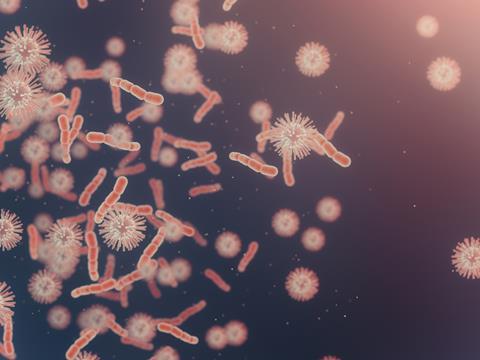
Innovative antimicrobial and antibacterial materials are announced on a near-weekly basis, but why do so few reach scale? What can the industry do to commercialise more solutions like this in a cost-effective, viable way? Andrew Manly, communications director at AIPIA, tells us more.
Over the last decade (or more) AIPIA has reported on the development, or research into the development, of hundreds of active packaging materials – intended to fight microbial or bacterial growth – to extend the shelf life and maintain the condition of perishable foods and some sensitive pharmaceuticals.
These projects are using a host of materials, which range from bamboo to cellulose on one hand and cranberries to durian skins on the other. Add to that an extensive mix of more exotic materials, such as nano mud, chitosan, and essential oils of many herbs, and you have the potential to be confused. l am, for sure. At the end of the day, it’s got to be about effective food waste prevention.
Let’s be clear from the outset, there are some highly successful active materials on the market - whether additives, coatings or compounds, from highly reputable companies such as Aptar, Parx, and Sealed Air; to name just three AIPIA members in this space.
My confusion arises from how many different materials researchers actually need to explore to come up with what is needed. Again our members such as AIMPLAS and ITENE are doing great work here, often in collaborative projects with industry partners.
But when researching one story l came across no less than 200 different university research programs developing some form of antimicrobial or antibacterial packaging film.
Research is, of course, necessary – you may have to go down many avenues before you find the right path. My issue is, after more than a decade, why have we not settled on four or five promising materials which have the right properties and focused our attention on these?
What is needed are effective, scalable materials or additives which are cost-effective and meet most sustainability criteria (recyclability being a key one).
I am not a scientist, but over the years one or two materials, such as cellulose or chitosan (the shells of shrimps and lobsters and other crustaceans) have shown great promise and have the advantages of being plentiful, easy to source, and highly cost-effective. There would seem to be a sound criterion for using them as the basis for ongoing research and development and, l emphasize again, at scale!
Nanomaterials have also shown themselves to be highly effective antimicrobial agents and, in the right combination of compounds, can have dramatic beneficial effects. AIPIA worked with several partners on the NanoPack project, funded by the EU’s horizon 2020 program.
In three years we developed a very effective plastics packaging film using halloysite nanotubes combined with oregano and thyme essential oils. The resultant film proved able to inhibit mould growth in bread by at least three weeks; increase saleability of fresh cherries by 13%; and expand shelf-life of yellow cheese by at least four additional days.
However, any commercialization of this, or any other, food contact material is stalled by the need for regulatory approval, in the EU by ESFA. But this can take years, which makes most industry-funded projects unattractive. This is a major barrier to developing active food contact materials beyond the laboratory, in my opinion, and needs to be cleaned up urgently, both here in Europe and in the USA’s FDA. We all want them to do their job, but not take forever about it.
Food (and pharmaceutical) waste is now at the top of the agenda item for governments, NGOs and affected industries. Of course, the sustainability factor is also part of this equation – hence the focus on using naturally derived materials for these antimicrobials and antibacterials. But let’s not forget food waste is a bigger environmental problem than packaging waste.
Given the amount of food that continues to be wasted and both the monetary and environmental cost of it, there would seem to be an urgent need to encourage the development of more active packaging films. There needs to be more joined-up thinking on what to develop and encouragement from Governments and other organisations to speed up bringing these to market.
If produced at scale it would cost tiny amounts per pack to implement. As one AIPIA member said to me: “If you can reduce wasted food, extend selling time, and increase profitability along the supply chain it’s a no-brainer! Why would you not want to do that?” Answers, as before, on a postcard….
This article was created in collaboration with AIPIA (the Active and Intelligent Packaging Industry Association). Packaging Europe and AIPIA are joining forces to bring news and commentary about the active and intelligent packaging landscape to a larger audience. To learn more about this partnership, click here.











No comments yet